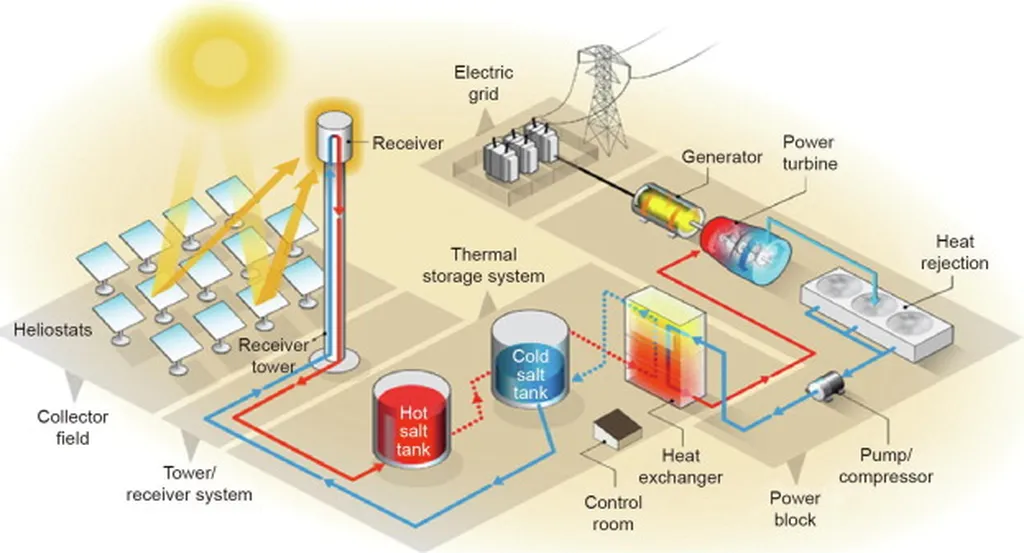In the quest to make concentrated solar power (CSP) plants more adaptable to the evolving energy landscape, a novel approach has emerged that could significantly enhance the flexibility and economic performance of these facilities. Researchers, led by Eylül Gedik from RWTH Aachen University, have proposed using molten salt electrical heaters to lower the minimum electricity output of CSP plants, potentially revolutionizing how these plants integrate with the grid.
The study, presented at the SolarPACES Conference Proceedings—translated to English as the Solar Power and Chemical Energy Systems Conference Proceedings—examines three distinct configurations of molten salt electrical heaters. These configurations include placing the heaters in parallel to the receiver, in parallel to the hot tank, and in series to the receiver. Each setup was evaluated under six grid and three revenue scenarios, with a focus on the Fuerteventura region.
The findings are promising. The application of molten salt electrical heaters, particularly through Configurations 1 and 3, has been shown to enhance the flexibility characteristics of CSP plants. This includes a notable 10.2% increase in the demand coverage factor, an 84.6% decrease in start-up instances, and a 41.4% increase in operating hours. Economically, the technology offers a substantial boost, with up to a 35.7% increase in gross profit.
“Our research demonstrates that integrating molten salt electrical heaters can significantly improve the operational flexibility of CSP plants,” said Gedik. “This not only makes the plants more adaptable to varying grid demands but also enhances their economic viability.”
The implications of this research are far-reaching. As the energy sector continues to evolve, the ability to operate CSP plants in a more flexible and dispatchable manner is crucial. This technology could pave the way for CSP plants to better integrate with renewable energy sources, providing a stable and reliable power supply.
“By lowering the minimum electricity output, we can make CSP plants more responsive to grid needs,” Gedik explained. “This is particularly important as we move towards a more decentralized and renewable-dominated energy system.”
The study’s findings suggest that the adoption of molten salt electrical heaters could be a game-changer for the CSP industry. As the energy sector strives for greater flexibility and efficiency, this technology offers a promising solution that could shape the future of solar power generation.
In the broader context, this research highlights the potential for innovative technologies to address the challenges of integrating renewable energy sources into the grid. As the energy landscape continues to transform, such advancements will be crucial in ensuring a stable and sustainable energy future.

